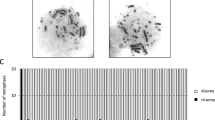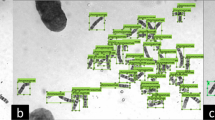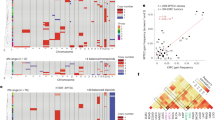Abstract
FOR those who work with small mammals, it is sometimes desirable to determine the chromosome complement in cells of particular individuals. Until recently, the most reliable technique for chromosome number determinations depended on the reasonably high mitotic rate and other desirable properties of the seminiferous tubules (for example, Matthey1). The difficulty with those techniques is that they do not permit the assessment of chromosome numbers in females, or in males apart from during the breeding season. Beatty2 described a method of preparing corneal epithelial cells for chromosome counts, which overcame the shortcomings of relying on testicular cells, but many of the metaphase plates were not adequately spread. As a consequence, chromosome counts of only 20 cells from a total of 445 could be listed as exact counts. More recently, Ford et al. 3 and many other workers, have described very elegant techniques for mammalian chromosome counts, employing short-time culture of cells from a variety of tissues, primarily bone marrow. The primary difficulty with these techniques is the fact that very few laboratories have the equipment or personnel necessary for the carrying out of tissue culture. Another difficulty is the apparently large number of cells which possess chromosome numbers different from the diploid number. One cannot be sure if this heteroploidy is present in the tissue in the live animals or arises as a result of the extensive preparatory technique. This communication sets forth a relatively simple method for preparing corneal epithelium cells for reliable chromosome counts.
This is a preview of subscription content, access via your institution
Access options
Subscribe to this journal
Receive 51 print issues and online access
$199.00 per year
only $3.90 per issue
Buy this article
- Purchase on SpringerLink
- Instant access to full article PDF
Prices may be subject to local taxes which are calculated during checkout
Similar content being viewed by others
References
Matthey, R., Rev. Suisse Zool., 64, 39 (1957).
Beatty, R. A., Chromosoma, 8, 585 (1957).
Ford, C. E., Jacobs, P. A., and Lajtha, L. G., Nature, 181, 1565 (1958).
Author information
Authors and Affiliations
Rights and permissions
About this article
Cite this article
FECHHEIMER, N. Mammalian Cell Chromosome Counts : a Simple Method for making Preparations. Nature 188, 247–248 (1960). https://doi.org/10.1038/188247a0
Issue date:
DOI: https://doi.org/10.1038/188247a0
This article is cited by
-
Orange II induced cytogenetical changes in albino mice
Experientia (1982)
-
Chromosomes of the Coypu
Nature (1966)
-
Hæmoglobin Pattern and Chromosome Number of American, European, and Japanese eels (Anguilla)
Nature (1962)
-
Identification of the Chromosome Complements of New-born and Adult Living Mice
Nature (1961)
-
A chemically-induced variegated-type position effect in the mouse
Zeitschrift f�r Vererbungslehre (1961)



